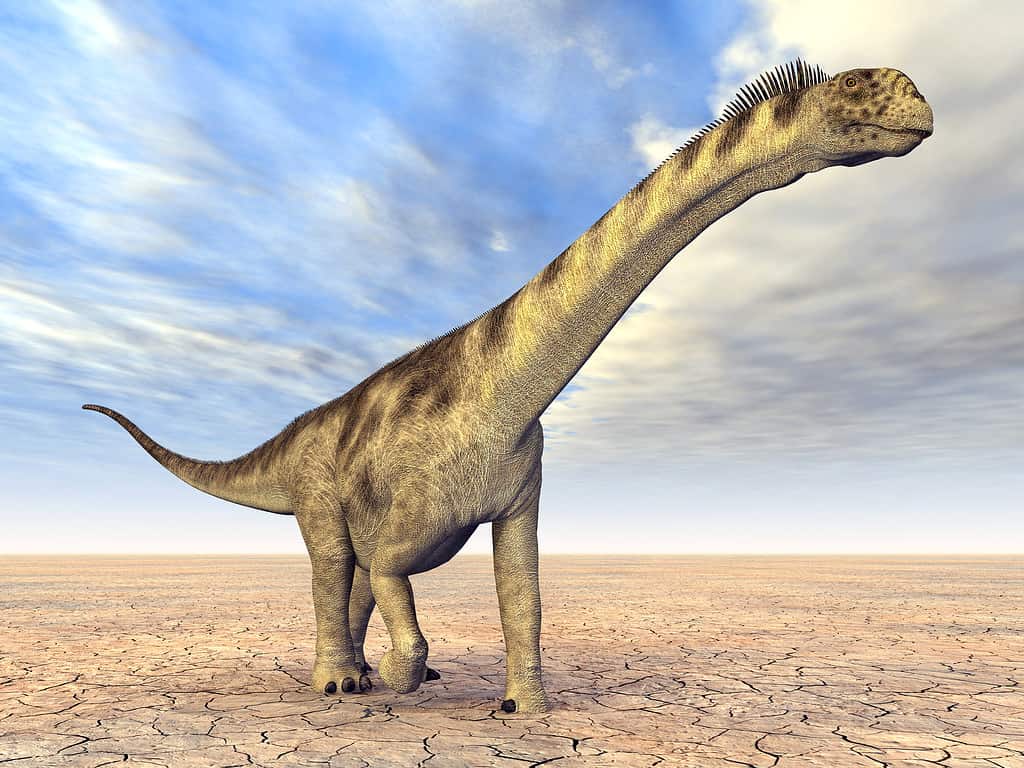
Camarasaurus were sauropods that lived in the late Jurassic Period.
©MR1805/iStock via Getty Images
Long before humanity became the dominant life form on the planet, other animals reigned supreme and towered over any living species we see today. Thanks to the remains of their bones and impressions buried in the Earth, humans of all ages are left in awe by the spectacle of dinosaurs.
Dinosaurs are a “catch-all “term to describe animals that lived millions of years ago and resembled giant lizards or birds. There were thousands of different types of dinosaurs which roamed the planet, with one being the most common in North America. Throughout the Midwest, fossils of a Camarasaurus litter the lands.
Who were these mysterious dinosaurs? Why were they so common in North America? Thanks to fossil records, scientists have an idea of what these amazing animals were like.
What Was the Camarasaurus?
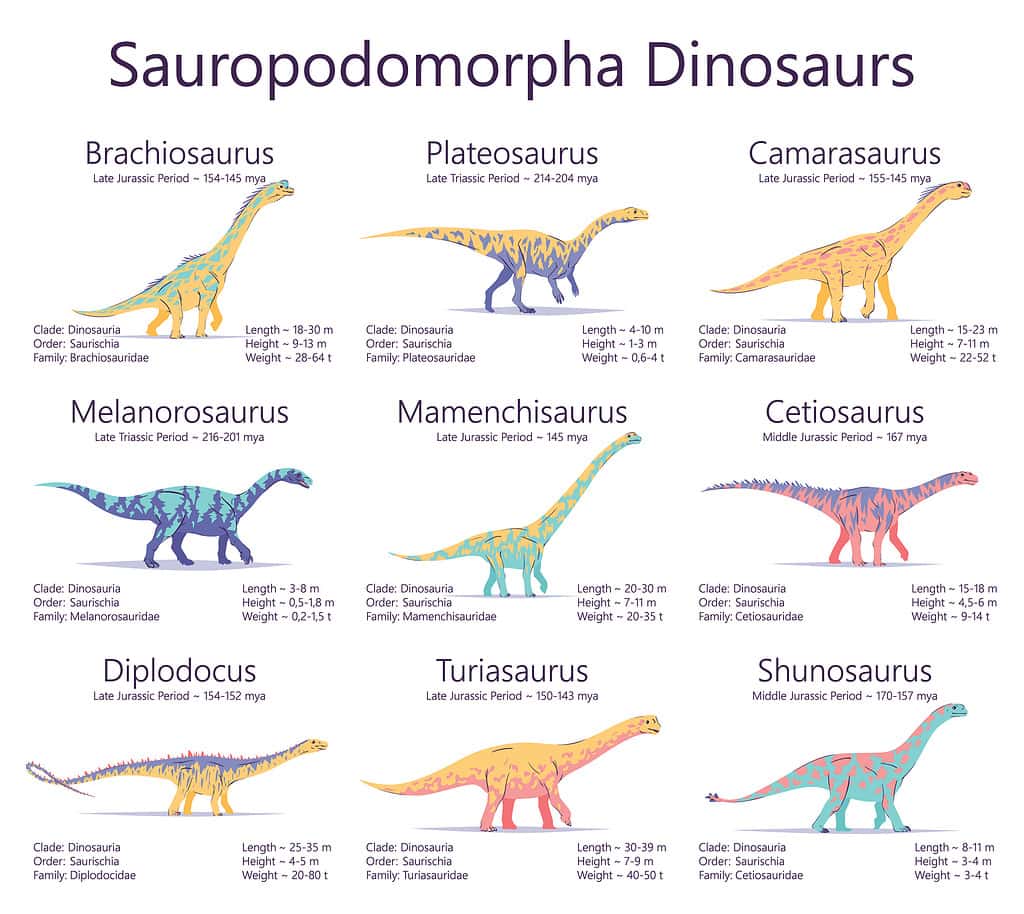
Sauropods were the largest living land animal that ever lived.
©Tinkivinki/iStock via Getty Images
The Camarasaurus was a member of the sauropod species. Sauropods are famous for being the largest herbivores of their time. They have long necks, small heads, thick tree trunk legs, long whip-like tails, and a fused backbone near the hip.
Popular examples of sauropods are:
- Apatosaurus
- Brontosaurus
- Brachiosaurus
- Titanosaurus
Compared to the examples above, Camarasaurus was much smaller than its related cousins. They had nostrils in front of their eyes at the top of their snout. Their necks and tails were shorter and possessed large, spoon-shaped teeth.
What Does Camarasaurus’ Name Mean?
The Camarasaurus was named in 1877 by Edward Drinker Cope. He noted the discovered fossils have hollow chambers in their vertebrae (backbones). Thus, the Camarasaurus name translates as “chambered lizard.”
How Big Was the Camarasaurus?
Overall, Camarasaurus was 18 meters long or 59 feet long. Still massive by most animal standards today, it was smaller than Brachiosaurus, which was 59-72 feet long.
An average Camarasaurus likely weighed 50,000-60,000 pounds.
When Did the Camarasaurus Live?
The Camarasaurus lived 161-146 million years ago during the Late Jurassic Period, which was popularized by the science fiction movie Jurassic Park. However, the dinosaurs featured in the film were not accurately depicted.
Popular dinosaurs living during the Jurassic Period were:
- Camarasaurus
- Allosaurus
- Stegosaurus
- Diplodocus
- Apatosaurus
Where Did the Camarasaurus Live?
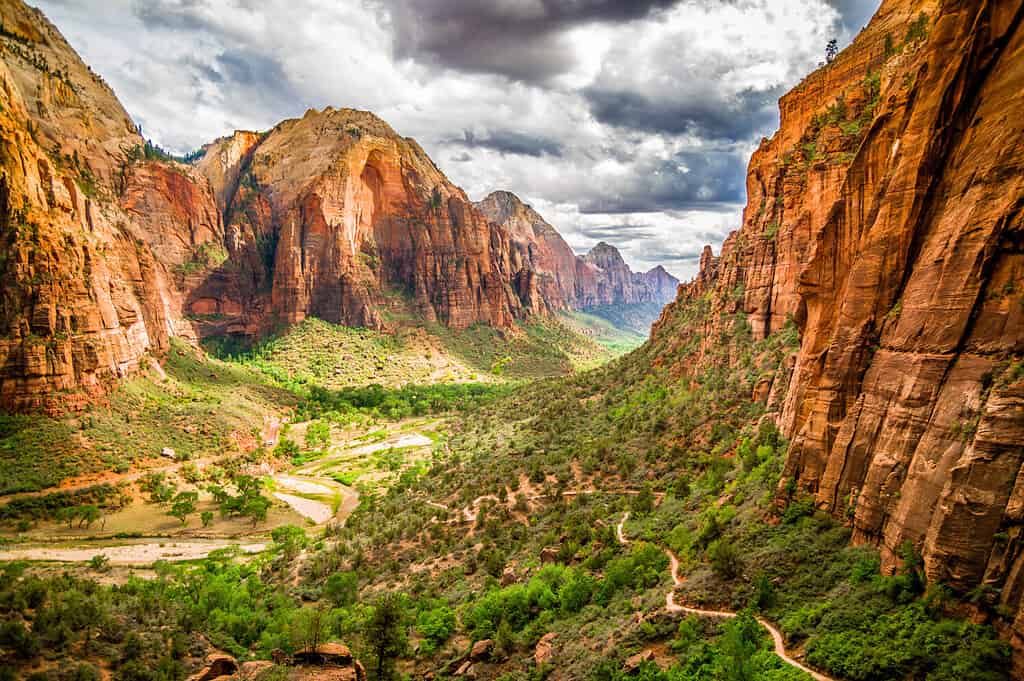
Since they were most common throughout the Midwest, many fossils of camarasaurus are found in Utah.
©Fotos593/Shutterstock.com
Camarasaurus was the most common sauropod in North America at one time. They were so widespread that their fossils can be found across most of North America, with most findings in Utah, Nebraska, and New Mexico. Some fossils were discovered in Montana as well.
Scientists believe there are over 500 specimens of individual bones and partial skeletons of Camarasaurus.
What Did the Camarasaurus Eat?
All sauropods were herbivores, and Camarasaurus was no different. They ate a strict diet of shrubs and leaves from treetops. Using their spoon-shaped teeth, Camarasaurus would reach up or lower its head to scoop leaves into its mouth.
To digest their food more effectively, Camarasaurus swallowed rocks to help break down tough matter, similar to animals in the crocodilian family, some birds, and seals. These animals are called gastroliths.
Scientists recognize specific rocks near sights of fossilized animal remains, noting different textures, which indicated the rocks had passed through the digestive tract.
However, other studies find Camarasaurus had robust stomachs and better-defined teeth to allow them to chew food before swallowing.
Did Camarasaurus Have Any Predators?

Allosaurus were one of the strongest predators living at the time, capable of killing a sauropod.
©Daniel Eskridge/iStock via Getty Images
Hunting Camarasaurus was difficult for most predators because these dinosaurs were exceptionally large and lived in herds. Small predators would be crushed underfoot if they were not careful, and large predators would waste a lot of precious energy trying to land a killing blow, risking injury.
The only predator capable of hurting Camarasaurus was Allosaurus. These large theropods were similar to the Tyrannosaurus rex, but smaller. An adult Allosaurus was 28-39 feet long, not tall enough to take on a herd of Camarasaurus. Fossil records indicate Allosaurus dying due to tail spike attacks from Stegosaurus,’ indicating they were more suitable prey.
However, a juvenile Camarasaurus could be prey to a full-grown Allosaurus if it wandered away from the herd.
When Was the Camarasaurus Discovered?
The first fossil records of Camarasaurus were discovered by Ormel Lucas in 1877 in Colorado. The dinosaur was given its name later by Edward Cope in the same year. At the time, the fragments of skeleton that were found indicated a different type of sauropod than others previously discovered.
In 1925, Charles W. Gilmore discovered the first nearly complete skeleton of an adolescent Camarasaurus. The specimen, now named CM 11338, is on display at the Carnegie Museum of Natural History in Pittsburg, PA.
What is the Dinosaur National Monument?
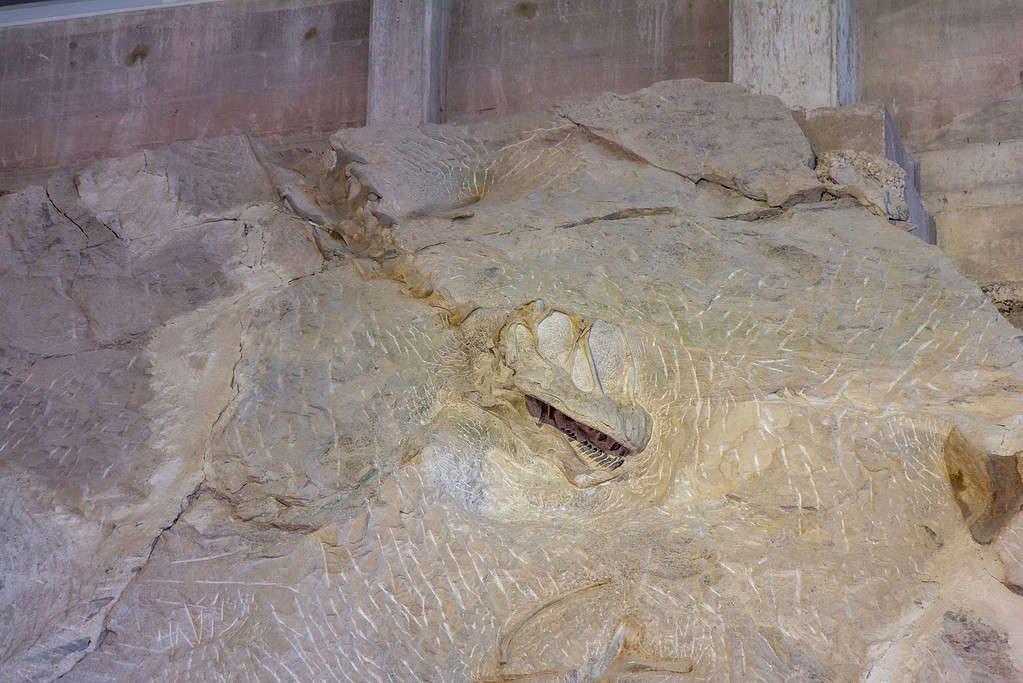
A camarasaurus skill and vertebrae are available for viewing at the Dinosaur National Museum.
©Colophotos/iStock via Getty Images
The Dinosaur National Monument is a national preserve where guests can view fossils of several dinosaurs all buried in one location. Each fossil is visibly embedded in rocks for observation.
During the Bone Wars or The Great Dinosaur Rush of 1877, competitive fossil hunters rushed the region to discover new dinosaurs and make a name for themselves. The majority of the search focused on Wyoming, Nebraska, and Colorado, but Utah was not left untapped.
A rivalry between paleontologists Edward Cope and Othniel Charles Marsh developed. Each sought to outdo the other, using their vast fortunes and high standing to charter expeditions in the region. They attempted to discover bones for their affiliate academies. Reports indicate both men resorted to theft, bribery, and destruction of bones to ruin the other’s reputation.
In the end, both paleontologists became bankrupt and lost much standing in the community by using underhanded tactics. However, their rivalry advanced the study of paleontology, and many new dinosaurs were discovered thanks to their efforts.
What Happened to the Camarasaurus?
The Jurassic period ended when an extinction-level event decimated the planet, killing nearly 76% of all life. Scientists hypothesize a comet or meteor struck the planet, causing a sudden climate shift which many animals, including Camarasaurus, could not survive.
This event is known as the Triassic-Jurassic Extinction (TJE). It is ranked as the fourth most severe of the six extinction-level events that happened on Earth.
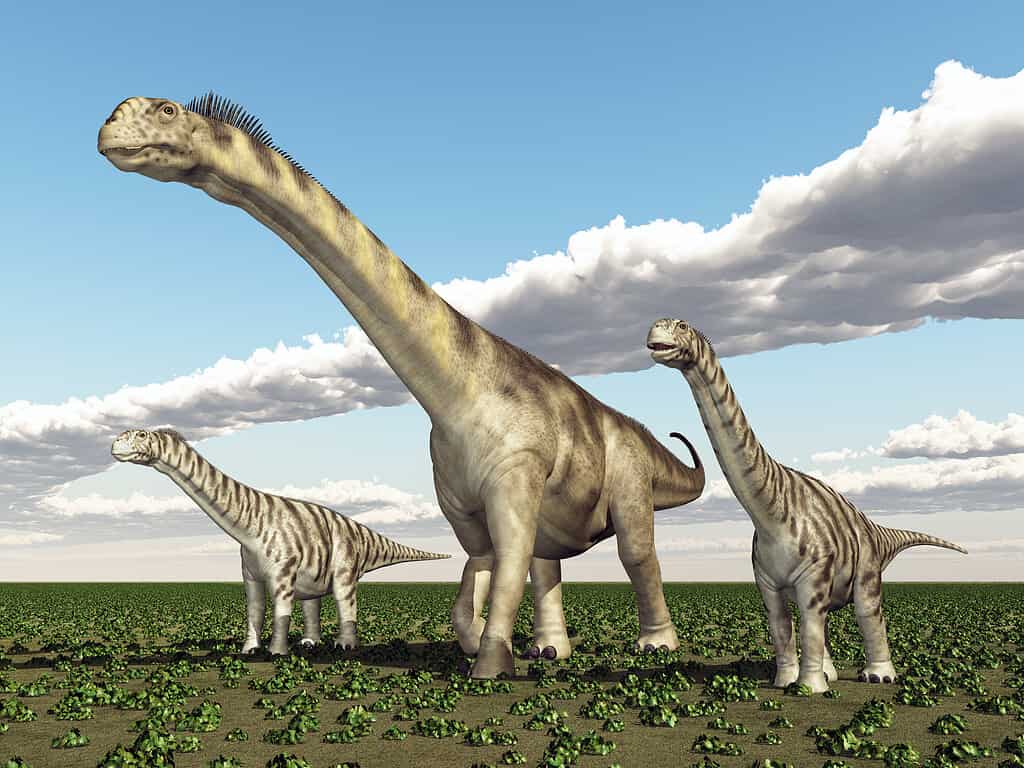
Meteor impacts, climate change, rising carbon dioxide, and volcano eruptions likely led to the TJE.
©MR1805/iStock via Getty Images
Sadly, behavior information on Camarasaurus is still speculative. More fossils and research are needed to understand what these animals were, how they behaved, and how they interacted with other species of the time.
The photo featured at the top of this post is © Catmando/Shutterstock.com
Thank you for reading! Have some feedback for us? Contact the AZ Animals editorial team.







